
Moist.
Flavorful.
Not too sweet!
This delicious vegan carrot cake recipe is the one. It is the best vegan carrot cake recipe you will ever try because it is an easy vegan carrot cake recipe, with a light but moist crumb that isn’t cloyingly sweet. In fact, I daresay it’ll be the best carrot cake, period–vegan or not! If you’ve been missing carrot cake since you went vegan or had to cut out dairy, you’re going to love this vegan carrot cake recipe!!
Most carrot cakes I’ve had have fallen into the “that’s way too sweet for me” category. So, I aimed to create a recipe that even my parents would declare as perfect for their moderately developed sweet tooth.
I mean, come on. I’m Korean. There is no greater compliment on a dessert than the phrase, “it’s not too sweet!”
Without further ado, let’s get to it and make the best vegan carrot cake EVAR!
Disclaimer: Some of the links in this post may be affiliate links for products I use and love. If you make a purchase after clicking one of those links, I may earn a small affiliate commission, perhaps enough to buy some extra gochujang or gochugaru 🙂
What Makes a good carrot cake?

Did you know that some people claim that carrot cake originates from European “carrot pudding” recipes? These “carrot puddings” were essentially carrots stuffed with all manner of things, including meat! I mean, I don’t want to food shame people, but, uh… that is not something I’ll be making any time soon!
The present version, particular to the United States and the UK, is a cake that includes shredded carrots in the batter and a tart, cream cheese frosting. The crumb is often noted for being:
- Moist
- Flavorful
- Carrot-y
In my experience, carrot cakes have a tendency to veer into the “dense” category, especially vegan carrot cakes. With the exclusion of eggs, it can be difficult to achieve enough structure in the cake to procure a decent crumb. I’ve also found that when the cake is paired with the cream cheese frosting, we are almost always in the “too sweet” territory.
Finally, my biggest gripe with many carrot cakes is that the frosting is way too thick and heavy. Because the cake itself is so moist and rich (often including nuts, like this one does!), it doesn’t make much sense to top it with an overly heavy vegan buttercream. The frosting recipe included in this vegan carrot cake recipe is light, tart, and perfect for this cake.
The best carrot cakes, including a vegan carrot cake, are those that offer a delightfully light and moist cake that isn’t overly sweet (think less sweet than what you would normally want in a slice of cake), paired with a light vegan cream cheese frosting.
This vegan version of this classic dessert does exactly that and I’m pretty sure this vegan carrot cake will become one of your favorite desserts of all time!
Key Ingredients and Notes on Substitutions for vegan carrot cake.
Carrots.

It is not possible to make carrot cake, including this vegan carrot cake, without carrots. However, do you need to use fresh carrots? You can use frozen carrots, but they will have to be shredded before they are frozen. Can you use store-bought pre-shredded carrots? Yes, you can use store-bought pre-shredded carrots. However, the processing of pre-shredded carrots will render them less pliable and a little bit hard. They will not incorporate into your carrot cake batter as well as freshly shredded or grated carrot.

A word on how to achieve the right texture for your carrots. Some people like feeling bits of carrot in their carrot cake. If this is you, then hand shredding or grating using a box grater is likely your best bet. For me, I like less texture. I also want to keep my cake bouncy and light, and larger chunkier pieces of carrot will inhibit that. Hence, I prefer using a food processor to turn the carrots into tiny, small pebbles.

What is cake flour? Cake flour is a pre-sifted flour that contains less protein than all-purpose flour. What does that mean? It means that cake flour has less gluten-forming potential, and as a result, produces a more tender crumb. This makes the flour particularly suitable for cakes. Hence the term “cake flour.”
Can you substitute with all purpose flour for this vegan carrot cake? Yes, absolutely. In fact, the difference will be almost negligible. If all you have lying around your house is all purpose flour, that should not stop you from making this vegan carrot cake recipe!
What about whole wheat flour? Whole wheat flour can still create a delicious vegan carrot cake. However, the cake may be quite dry. If you try to use a gluten-free flour for this cake, it will be very dense. Again, still delicious, but a very different crumb and one that will likely fall apart if you try to frost it.
Almond Flour.
One of the secrets to achieving a moist vegan carrot cake is almond flour. Almond flour does such a wonderful job of injecting and retaining moisture (through the natural oil content of almonds). Again, your best bet for this cake is to use a bleached, finely ground almond flour, to keep your cake nice and light.
Brown Sugar.
Brown sugar will not only help to incorporate a lovely, caramel-y flavor to your vegan carrot cake, it will also help to provide moisture. I use a light brown sugar for this recipe, but you can also use dark brown sugar (though that will result in a denser cake). You can also substitute with white sugar (though you’ll miss out on the flavor of brown sugar) or even coconut sugar (though this will make the cake more dense and a little dry).
Silken Tofu & Aqaufaba (My Vegan “Egg”).

Unless this is your first rodeo with The Korean Vegan recipes, you know that I like to use a mixture of silken tofu and aquafaba (the liquid in a can of unsalted chickpeas) for my vegan “eggs” in baking. It makes sense, right? The tofu has both protein and fat, just like an egg yolk, and aquafaba looks, feels, and acts like egg whites. Most non-vegan carrot cake recipes call for a lot of eggs. The fat from the egg yolks creates a beautiful, tender, moist cake; the protein helps to create structure for the cake; and the egg whites bind everything together. This vegan carrot cake recipe relies on tofu and aquafaba to do the same thing.
In terms of substitutes, you can use soondooboo or soft tofu in place of silken tofu. I wouldn’t go any firmer than soft tofu, as you may end up seeing chunks of tofu in your cake and get that not really desired “tofu flavor” in your cake as well. You will not get that (trust me) with soft tofu or softer. Finally, if you don’t have or want to use tofu in your recipe, you can replace the silken tofu with soy milk or oat milk.
For aquafaba, if you don’t have a can of chickpeas lying around, you can use the gelatinous liquid that is produced when you mix water with flax seeds (sometimes referred to as “flax eggs”). If you don’t have flax eggs, you can also just replace with soy milk or oat milk.

Unsweetened Applesauce.
Unsweetened applesauce not only adds a little flavor to the vegan carrot cake, it also adds a ton of moisture without rendering the cake too oily. Some recipes call for applesauce as the exclusive source of fat (i.e., no oil), but relying only on applesauce to do that much heavy lifting can result in a gummy cake. I prefer using both oil and applesauce for this vegan carrot cake recipe. If you don’t have applesauce, you can try using crushed pineapples (drained of excess liquid) or half the amount of mashed bananas as a substitute.
Vegetable Oil.
As I alluded to above, in order to keep the cake as moist as possible, this vegan carrot cake recipe does call for vegetable oil. You can substitute with any neutral oil (canola oil, avocado oil, safflower oil, sunflower seed oil, etc.). You can also use extra virgin olive oil if you don’t mind the flavor. Finally, if you want to keep this recipe oil free, you can use applesauce. However, as I said, it can make the cake a bit gummy.
Toasted Pecans.

My husband hates nuts in his dessert, but I told him it’s nuts to make carrot cake without nuts! Here, I use toasted pecans to impart a lovely sweet, nutty flavor and tons of texture to our vegan carrot cake. But as with the carrots, I use a food processor to turn them into small pebbles, to guard against weighing down my batter. You can, of course, substitute with walnuts if you prefer those. You can also just skip the nuts altogether, if you have a nut allergy or hate nuts in your desserts like Anthony!
Vegan Cream Cheese.

For the cream cheese frosting of our vegan carrot cake, you’ll need some vegan cream cheese. I prefer using Tofutti’s vegan cream cheese, but feel free to use whichever brand you like. If you don’t have vegan cream cheese, I’m afraid you’re going to be hard-pressed to make a cream cheese frosting! However, I’ve found thick vegan sour cream (again, from Tofutti) works as a great substitute for vegan cream cheese.
Vegan Heavy Whipping Cream.

This is the ingredient that will really set this vegan cream cheese frosting, and even this entire cake, apart from all other vegan carrot cake recipes. Why? The inclusion of a light, whipped cream is what prevents the vegan cream cheese frosting from being scraped off and thrown in the trash (which is what I often end up doing with other carrot cakes).
I know, finding a good vegan heavy cream isn’t easy, but I’ve had a lot of luck with Country Crock’s Plant Cream. It whips up very similarly to heavy whipping cream. My friend and longtime vegan blogger, Lauren Toyota, is a huge fan of Cha’s Coconut Whipping Cream. If you don’t have access to a vegan heavy whipping cream, you can also try using full-fat coconut cream (minus the liquid), though this will almost certainly add coconut flavor to your frosting. You can also try using So Delicious’s So Coconut Whipped Topping, though this product is far more fragile than the whipped cream you’ll get from the products above.
Vegan Sour Cream.
In an effort to keep the vegan cheese frosting for our vegan carrot cake on the lighter, tarter side, I incorporated some vegan sour cream, as well. I find that vegan sour cream, especially Tofutti’s brand, does a great job of mimicking mascarpone. If you don’t have vegan sour cream, you can substitute with a solid, flavorless vegan yogurt.
Condensed Oat Milk.
What is the purpose of condensed milk, in general? Condensed milk helps to create creaminess, but also helps things set. This is particularly useful for vegan frosting recipes, since many of the attributes in non-dairy milk (like less protein in certain kinds of plant-based milk) tend to result in less stable frostings. Thus, the inclusion of a plant-based condensed milk (I really like Nature’s Charm’s Oat Milk variety) helps to stabilize our frosting.
You can use whatever variety of vegan condensed milk you can find (coconut, soy, etc.) for this vegan carrot cake recipe. If you don’t have access to vegan condensed milk, I would substitute with more vegan cream cheese and a tablespoon more powdered sugar.
Powdered Sugar.
The vegan frosting for this vegan carrot cake requires a little bit of powdered sugar. Surprisingly, not a lot. Why powdered sugar? It’ll dissolve more readily into the various ingredients and ensure your frosting doesn’t come out grainy. However, if you don’t have powdered sugar, feel free to substitute with regular granulated white sugar.
Can you substitute with maple syrup? I mean, you can try, but your frosting will come out much wetter and will likely have trouble setting. If you’re only going to frost the top of the cake (and not make this a layered vegan carrot cake), a softer frosting will be no problem. But if you’re trying to build a layer cake (like in the photographs), a firm stable frosting is necessary.
Vegan Butter.
Vegan butter will serve some of the same purpose as the vegan condensed milk–it helps with setting. Vegan butter is, after all, solid at even room temperature. This will also ensure that your frosting doesn’t get too soft. If you don’t have vegan butter, you can substitute with coconut oil (again, if you don’t mind the hints of coconut in your frosting).
Step-by-Step Instructions for Making This vegan carrot cake recipe.
This is a cake. So buckle up, there will be a few moving parts to this vegan carrot cake. All of them doable and clearly explained!
Step 1.
Preheat your oven to 350° F. Line a 6-inch round baking pan with parchment paper.
Step 2.
Toast your chopped pecans by placing them in a small skillet over low heat. Allow them to cook until they are toasted and fragrant, around 3 minutes, tossing them in the skillet every 30 seconds or so, to avoid burning. Chop using a knife or food processor. Set aside.

Step 3.
In a large mixing bowl, sift and whisk together the flour, almond flour, sea salt, baking powder, baking soda, and ground cinnamon.
Step 4.
In a large mixing bowl, add your aquafaba and silken tofu. Whisk together (or use a hand mixer) until frothy and the silken tofu has been completely broken down. Then, add your brown sugar and applesauce. Again, whisk until creamy. Then, add the vegetable oil slowly and down the side of your bowl, whisking constantly as you add it, until you achieve a very creamy mixture (around 2 minutes if using a hand mixer and 7 to 8 minutes if whisking by hand). This will allow for the slow but critical emulsification of your wet ingredients. Finally, add your vanilla extract in the same way you added your vegetable oil.
 Silken tofu whisked together with aquafaba until foamy
Silken tofu whisked together with aquafaba until foamy Whisked with brown sugar
Whisked with brown sugar Mixed with vegetable oil and applesauce
Mixed with vegetable oil and applesauceStep 5.
Add your dry ingredients, along with the carrot and the toasted pecans, to your bowl of wet ingredients. Using a spatula, incorporate the dry ingredients in large circular motions around your bowl, until all the dry ingredients have been incorporated. Do not overmix. Pour your batter into your prepared baking pan and bake until a toothpick inserted in the center comes out clean (around 38 to 40 minutes). Allow the cake to cool completely. (You can even wrap it in plastic wrap and place it in the fridge overnight–doing so will make frosting much easier).

Step 6.
To make your frosting, using a hand mixer, combine vegan cream cheese, butter, sugar, condensed milk, and sour cream until smooth and creamy. Set aside. Then, using the whisk attachment to a stand mixer, whisk your heavy cream on high into stiff peaks (mine takes about 1 minute). Add one heaping spoonful of the cream cheese mixture and whisk until incorporated. Continue adding cream cheese mixture, one large spoonful at a time, until it is entirely incorporated.
Cream cheese mixture before mixing.
Smooth cream cheese mixture.
Whipping vegan heavy cream.

Step 7.
Once your cake has completely cooled, slice your cake in half (to create two cake layers–you can also skip this and just frost the top!). Using a spoon or a piping bag, add enough frosting on top of the bottom layer so that it is entirely covered. Gently place the second layer on top. Add frosting to the top and using your spoon or an offset spatula, smooth out the top and frost the sides.




Step 8.
Decorate the top of your cake with more toasted pecans.

To make small marzipan carrots (like I did!), add 1 tablespoon of almond flour and 1 teaspoon of powdered sugar to two small bowls (each). Add to each bowl a couple drops of water, along with green and orange food coloring, respectively. Mix until a dough forms (drop by drop, keep adding water until you get a dough–don’t add too much water, as it’ll turn into a paste, not a dough!). Shape into small carrots!
Frequently Asked Questions.
What is a good egg substitute in carrot cake?
A mixture of both soft or silken tofu (the protein and fat), together with aquafaba (for binding) offers the best egg substitute for vegan carrot cake, while having no discernible impact upon the taste.
Why are vegan cakes so dense?
Vegan cakes can be dense for many reasons, but often because there isn’t sufficient protein from an egg to help with gluten structure, which is necessary to create a lighter crumb. In order to guard against this, the best substitute for egg in vegan cakes will contain protein.
Can vegan carrot cake be made gluten-free?
Yes. If you replace cake flour or all purpose flour with gluten-free flour, your vegan carrot cake can also be gluten-free. However, your cake will likely be more dense and fragile than a regular carrot cake.
Want More Vegan Cake Recipes?
5
6-Ingredient No-Bake Easy Pumpkin Cheesecake.
A no-bake pumpkin cheesecake that'll be the HIT of your holiday dinner party!
6
6-Ingredient No-Bake Easy Peaches & Cream Cheesecake.
A no-bake cheesecake that is truly the stuff of dreams!
7
Easy No Bake Vegan Sponge Cake
The BEST and ONLY vegan sponge cake recipe you'll ever need!
8
Recipe Card.
The Best Vegan Carrot Cake.
Joanne Molinaro
For a light, fluffy dessert that isn't too sweet!
Prep Time 40 minutes
Cook Time 40 minutes
Course Dessert
Cuisine American
1 food processor or box grater
1 stand mixer
1 hand mixer
1 sifter
For Carrot Cake.
- 1/4 cup (30 grams) pecans (plus more for topping)
- 1 1/2 cup (190 grams) cake flour
- 1/4 cup (20 grams) bleached fine almond flour (plus more for optional marzipan)
- 1/2 tsp sea salt
- 2 tsp baking powder
- 1 tsp baking soda
- 1 tsp ground cinnamon
- 1/4 cup (60 grams) silken tofu
- 1/2 cup (60 grams) aquafaba
- 1/2 cup (90 grams) light brown sugar
- 1/2 cup (96 grams) vegetable oil
- 1 tbsp vanilla extract
- 1 cup (120 grams) shredded carrot
For Whipped Cream Cheese Frosting.
- 1 cup (190 grams) vegan cream cheese (at room temperature)
- 2 tbsp (30 grams) vegan butter (at room temperature)
- 1 tbsp (15 grams) vegan condensed milk (at room temperature)
- 1/4 cup (45 grams) vegan sour cream (at room temperature)
- 1/4 cup (30 grams) powdered sugar
- 1 cup (232 grams) vegan heavy cream (cold)
Preheat your oven to 350° F. Line a 6-inch round baking pan with parchment paper.
Toast your chopped pecans by placing them in a small skillet over low heat. Allow them to cook until they are toasted and fragrant, around 3 minutes, tossing them in the skillet every 30 seconds or so, to avoid burning. Chop into small pieces using a knife or food processor. Set aside.
In a large mixing bowl, sift and whisk together the flour, almond flour, sea salt, baking powder, baking soda, and ground cinnamon.
In a large mixing bowl, add your aquafaba and silken tofu. Whisk together (or use a hand mixer) until the silken tofu has been completely broken down and the mixture is frothy. Then, add your brown sugar and applesauce. Again, whisk until creamy. Then, add the vegetable oil slowly and down the side of your bowl, whisking constantly as you add it, until you achieve a very creamy mixture (around 2 minutes if using a hand mixer and 7 to 8 minutes if whisking by hand). Finally, add your vanilla extract in the same way you added your vegetable oil.
Add your dry ingredients, along with the carrot and the toasted pecans, to your bowl of wet ingredients. Using a spatula, incorporate the dry ingredients in large circular motions around your bowl, until all the dry ingredients have been incorporated. Do not overmix. Pour your batter into your prepared baking pan and bake until a toothpick inserted in the center comes out clean (around 38 to 40 minutes). Allow the cake to cool completely. (You can even wrap it in plastic wrap and place it in the fridge overnight–doing so will make frosting much easier).
To make your frosting, using a hand mixer, combine vegan cream cheese, butter, sugar, condensed milk, and sour cream until smooth and creamy. Set aside. Then, using the whisk attachment to a stand mixer, whisk your heavy cream on high into stiff peaks (mine takes about 1 minute). Add one heaping spoonful of the cream cheese mixture and whisk until incorporated. Continue adding cream cheese mixture, one large spoonful at a time, until it is entirely incorporated.
Once your cake has completely cooled, slice your cake in half (to create two cake layers–you can also skip this and just frost the top!). Using a spoon or a piping bag, add a enough frosting on top of the bottom layer so that it is entirely covered. Gently place the second layer on top. Add frosting to the top and, using your spoon or an offset spatula, smooth out the top and frost the sides. Decorate the top of your cake with more toasted pecans.
Optional: To make small marzipan carrots, add 1 tablespoon of almond flour and 1 teaspoon powdered sugar to two small bowls (each). Add to each bowl a couple drops of water, along with green and orange food coloring, respectively. Mix until a dough forms (drop by drop, keep adding water until you get a dough–don't add too much water, as it'll turn into a paste, not a dough!). Shape into small carrots and add to the top of your cake.
Keyword vegan carrot cake
Did you like this recipe? If so, please leave a rating and share it!






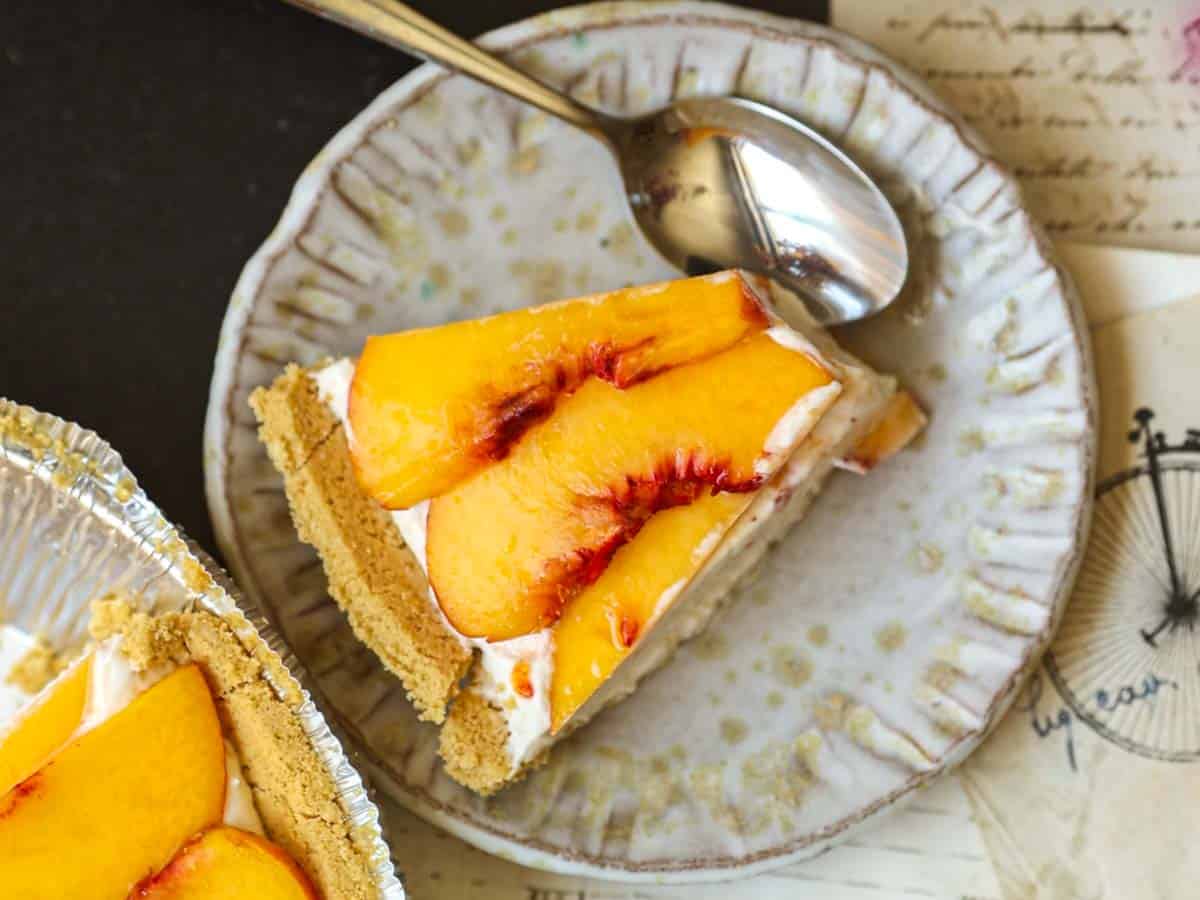
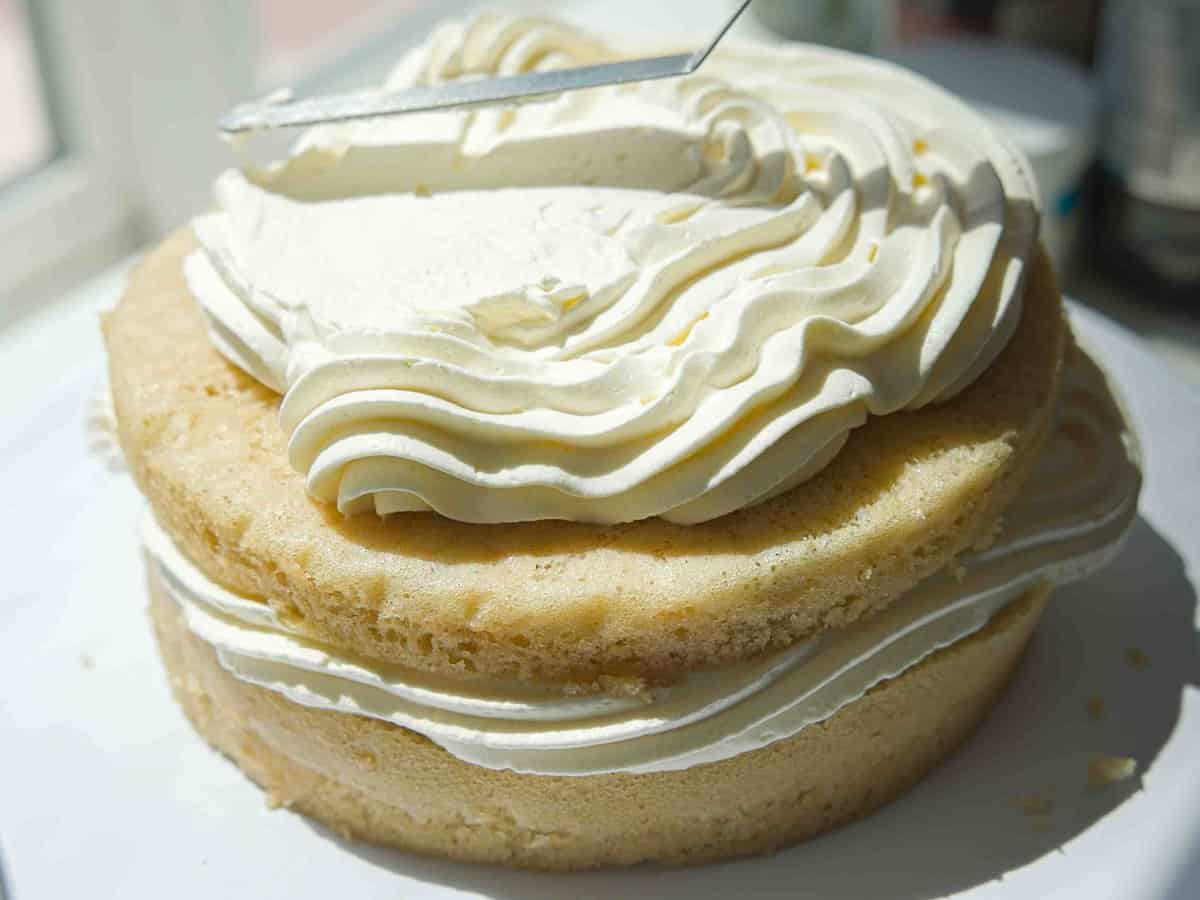
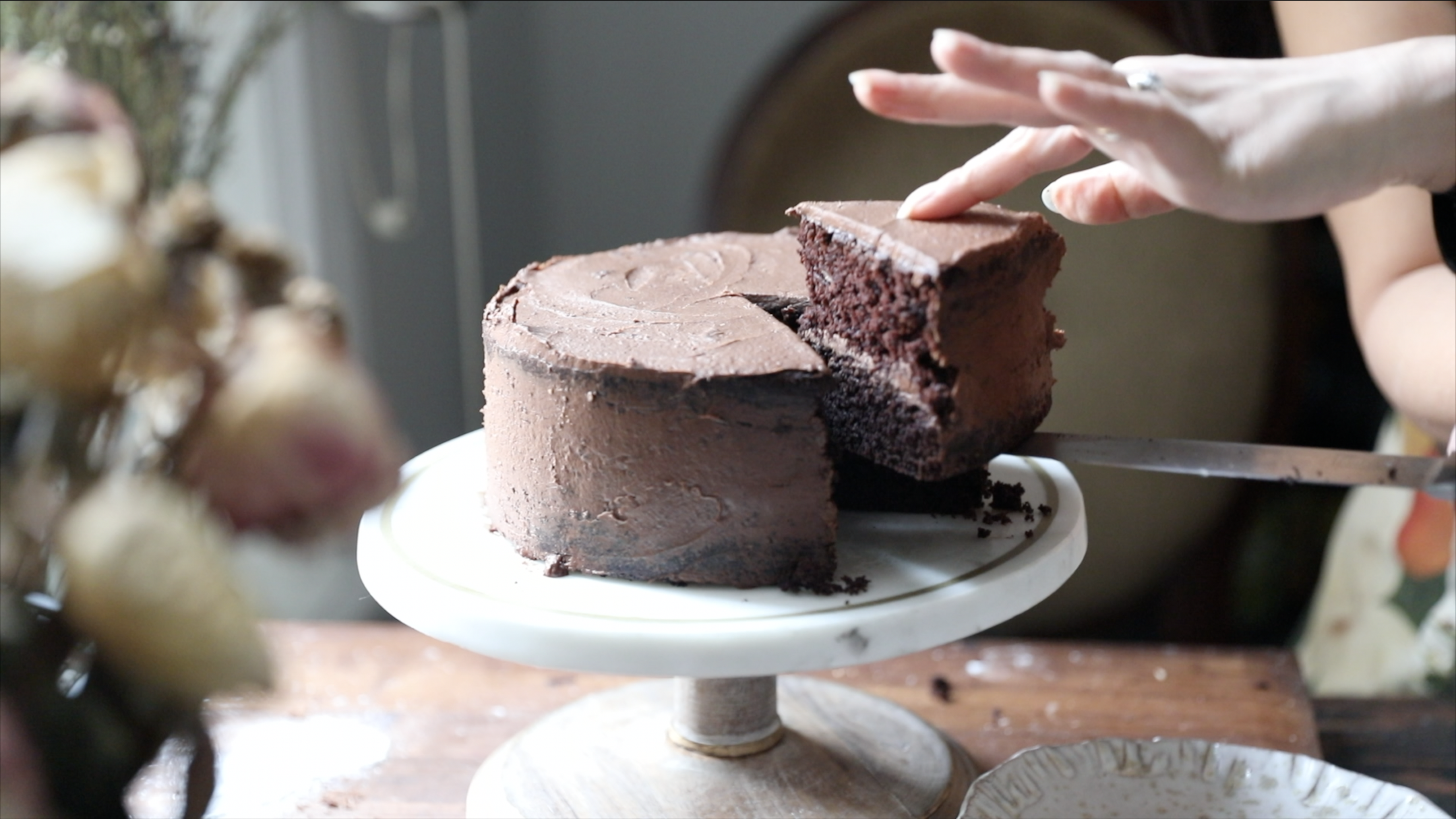



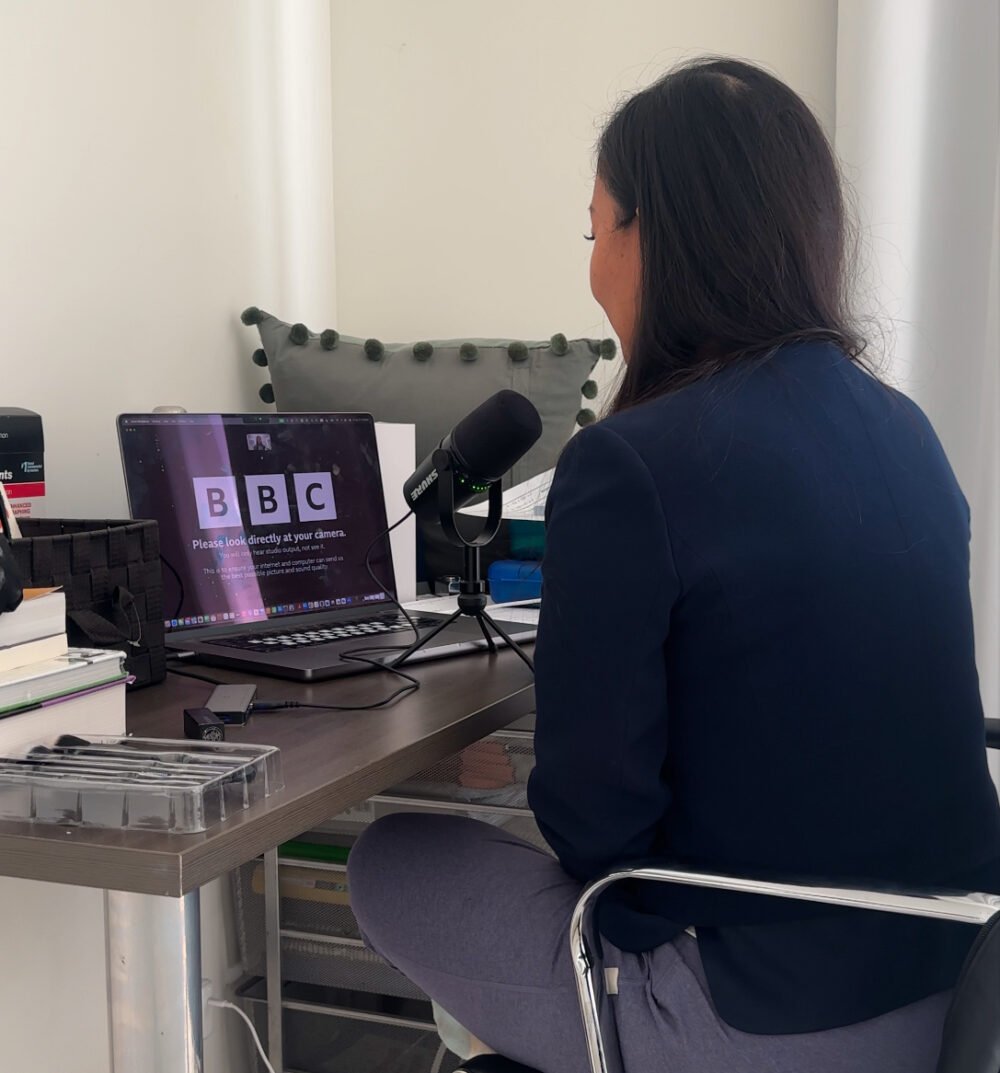



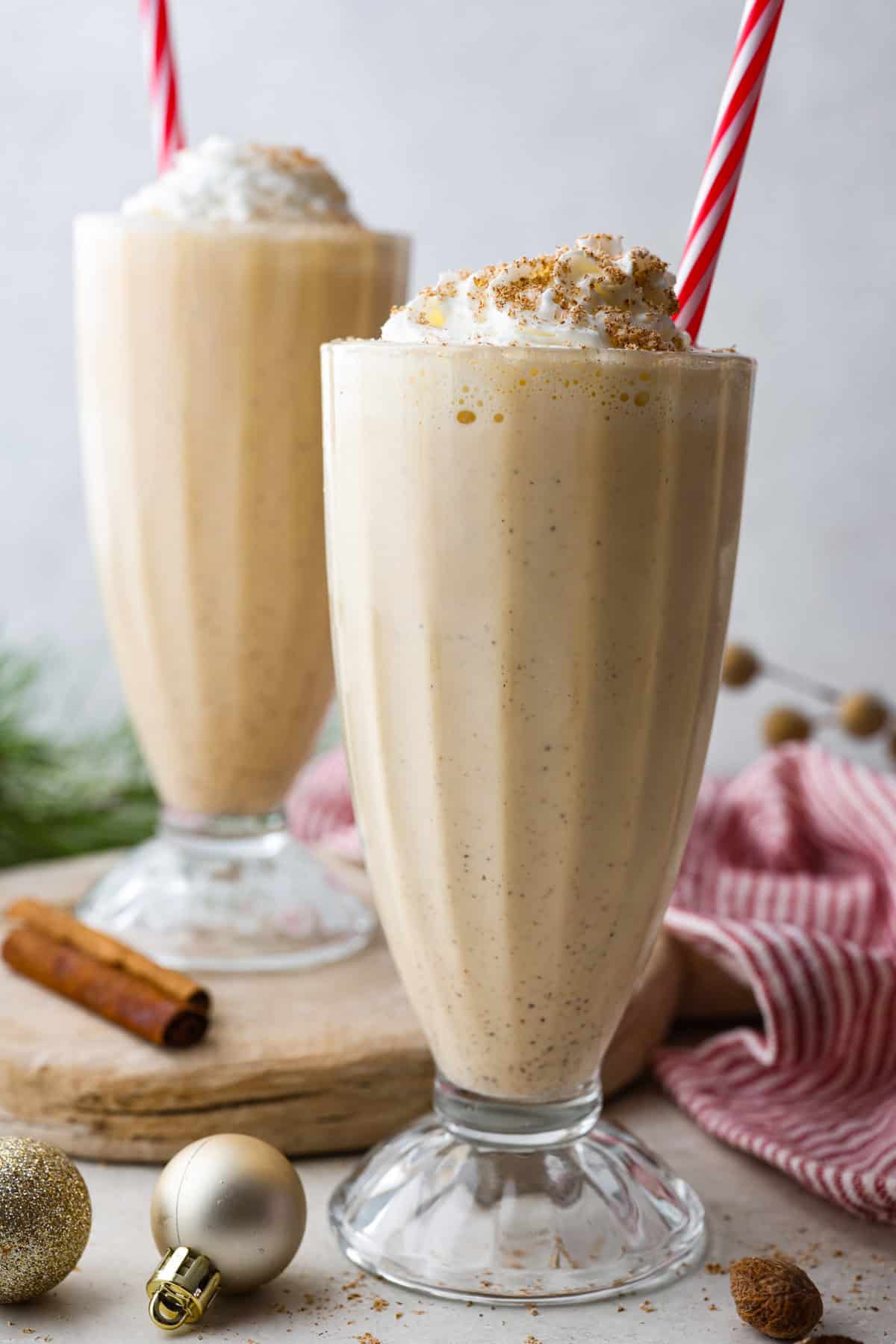



 English (US) ·
English (US) ·